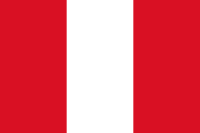
Photo from wikipedia
ABSTRACT The article examines how the design and governance of Peru’s water infrastructure shape the social practices and cultural values stakeholders engage in and draw on when negotiating water rights… Click to show full abstract
ABSTRACT The article examines how the design and governance of Peru’s water infrastructure shape the social practices and cultural values stakeholders engage in and draw on when negotiating water rights in a year of drought. Reviewing ethnographic data on a large irrigation project in south-western Peru, we discuss how the project both perpetuates power relations between water experts, authorities and users and creates room to challenge its hierarchical organization. The project’s infrastructural assemblage of state and community canals offers an interesting case to explore how the stakeholder cooperation encouraged by Peru’s water law produces hydrosocial communities.
Journal Title: Water International
Year Published: 2020
Link to full text (if available)
Share on Social Media: Sign Up to like & get
recommendations!